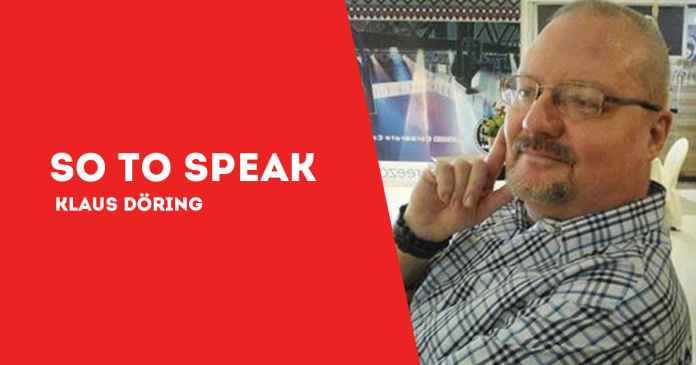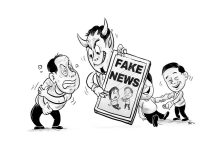
THE TERM “killing a job” generally means to cancel or terminate a job that is currently running or queued for execution. It’s a way of stopping a job before it completes its intended process. In some contexts, it might also refer to a job that is exceptionally good or successful, like in the phrase “killing it”.
I have experienced it many times. I have written about it many times. Nothing changed yet. Of course not!
Fact is, nowadays, the modern workplace can inflict dangerous levels of stress on employees even more than decades ago. Jeffrey Pfeffer, author of “Dying for a Paycheck”, argues that these practices don’t help companies – and warns governments are ignoring an emerging public health crisis.
Jeffrey Pfeffer is not the only one. Hundreds more followed Pfeffer’s footsteps.
Harmful workplace practices include things like long working hours, work-family conflict, economic insecurity arising from job losses and not having regular or predictable work hours, an absence of job control and, in the US, not having health insurance.
Your supervisor is more important to your health than your family doctor. That’s not my quotation but by Bob Chapman, CEO of Barry-Wehmiller.
The workplace is making people sick and even killing them – and people should care. With rising health-care costs all over the world, the workplace has become an important public health problem.
The World Economic Forum estimates that some three-quarters of healthcare spending worldwide is for chronic disease and non-communicable diseases account for 63 percent of all deaths. Chronic disease comes from stress and the unhealthy behaviors such as smoking, drinking, taking drugs and overeating that stress induces.
Numerous surveys show that the workplace is a leading cause of stress, and it is thus one important cause of the healthcare crisis.
Work practices that are bad for people don’t even help the company. Very clear. But who cares?
None of this is necessary, because the work practices that are bad for people don’t help the company, either. Long working hours are negatively related to per-hour productivity at both the national and industry level.
Although it may seem counterintuitive, layoffs or redundancies do not improve organizational performance and often drive the best employees to leave, and because of direct costs such as severance and indirect costs such as losing people with strong relationships with customers, frequently do not even save money.
For decades research has shown that giving people more control over how and when they do their jobs increases motivation and engagement.
Not surprisingly, stressed employees are more likely to quit – and turnover is expensive. And systematic research demonstrates what ought to be obvious – sick, stressed employees aren’t as proficient or productive in their work as those that are healthier. Look into a mirror! Maybe you feel the same while reading this.
Every indication is that work is getting worse. Job cuts, which used to occur only in tough economic times, are now routine. When 3G Capital combined food giants Heinz and Kraft, 20 percent of the workforce got the axe as the company consolidated manufacturing and removed overlapping functions.
The “gig economy” means that economic insecurity is higher as people don’t know what their income will be from one week to the next. Scheduling software that permits retailers and other businesses such as hotels and restaurants to have only the people that analytics predict will be needed means that workers often face fluctuating incomes and don’t have much ability to arrange for coping with family responsibilities.
Few leaders seem to understand that when people come to work for them, those individuals have placed their physical and psychological well-being in the leaders’ hands
Most fundamentally, in the 1950s and 1960s CEOs saw their job as balancing their obligations to shareholders, customers, employees and the community – so-called “stakeholder capitalism”. Now shareholder interests dominate. Few leaders seem to understand that when people come to work for them, those individuals have placed their physical and psychological well-being in the leaders’ hands.
But some leaders are taking this idea of stewardship seriously. Companies such as Patagonia, Collective Health, SAS Institute, Google, John Lewis Partnership – which is employee-owned – and Zillow provide a template of what might be different. As I said, SOME leaders. Really only a very few. Not enough. I guess most leaders really don’t care about their staff.
People get paid time off and are expected to use it. Managers don’t send emails or texts at all hours – people work, go home and have time to relax and refresh. The organizations offer accommodations so that people can have both a job and a family life. People are treated like adults and have control over what they do and how they do it to meet their job responsibilities, not micromanaged.
Most importantly, the companies are led by individuals who take their obligations to their people seriously. SAS Institute has a chief health officer whose job is not just to control costs but also to ensure employees are as healthy as possible. Bob Chapman recognizes that everyone who comes to work at Barry-Wehmiller is “someone’s precious child” or family member.
People need to choose their employer not just for salary and promotion opportunities but on the basis of whether the job will be good for their psychological and physical health. Business leaders should measure the health of their workforce, not just profits.
And governments concerned about the health-care cost crisis need to focus on the workplace, because workplace stress is clearly making people sick. None of this is necessary – no one should be dying for a paycheck.
***
Email: doringklaus@gmail.com or follow me on Facebook, LinkedIn or X – Twitter or visit my www.germanexpatinthephilippines.blogspot.com or www.klausdoringsclassicalmusic.blogspot.com/PN







